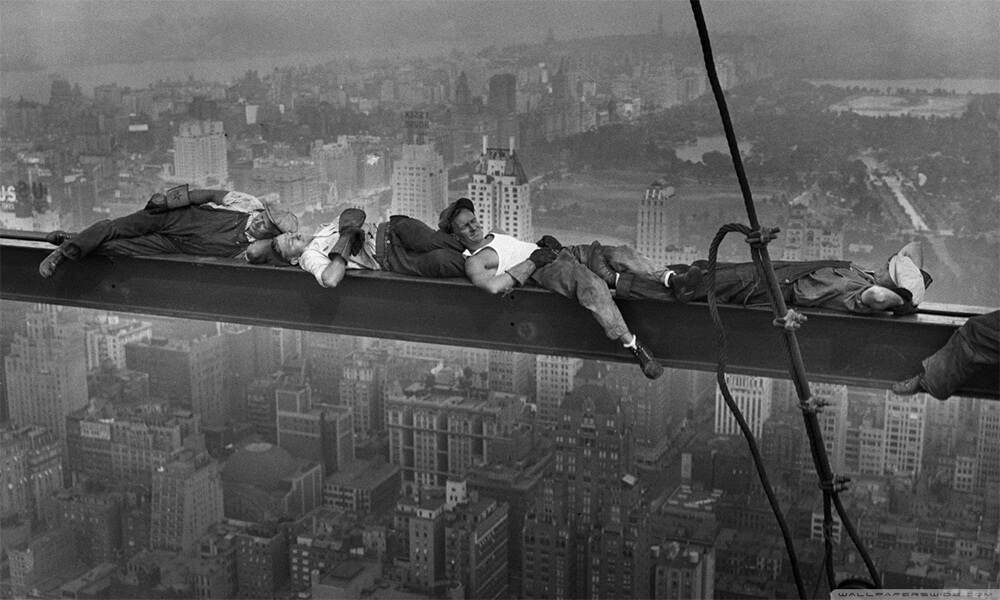A Look Back at Workplace Safety Throughout the Century
It’s hard to imagine a time when workers casually ate their lunches as they sat upon the steel beams of a skyscraper without any safety net or fall protection system in place. Compared to today’s standards, the early 1900s were a drastically different time in terms of safety. And we often forget how much our safety regulations and equipment have improved since then. Today, OSHA compliant equipment is required, and businesses face hefty fines if worksites are deemed unsafe. But safety measures weren’t always this way.
Here’s a look back at what safety was like in the early 1900s, up until today:
1900-1920
Unfortunately, we must often learn from the tragedy in order to make significant changes. One such tragedy occurred in 1907 when an explosion in a mine in West Virginia killed 362 miners. The Monongah mine was seen as the worst mining disaster in U.S. history and, as a result, the U.S. Bureau of Mines was created three years later.
In 1908, Dr. Alice Hamilton published her first article related to occupational diseases in the United States after seeing how little research had been done on the topic. She was soon recognized as an expert on occupational diseases and devoted herself to research in industrial medicine.
In March 1911, the horrific fire that broke out inside the Triangle Waist Company in New York City caused 146 worker deaths, most of whom were female immigrants in their teens and 20s. This was considered the deadliest workplace incident in New York City until 9/11. Also in 1911, the United Society of Casualty Inspectors was established in New York City.
The National Safety Council was founded in 1913 and immediately began improving issues in safety, particularly traffic and industrial safety. Two years later, the U.S. Labor Department issued its first compilation of regulations.
1920-1940
Workplace safety measures continued to grow as industrialization in the United States took off. In 1935, the National Labor Relations Act would establish the National Labor Relations Board, which sought to protect the rights of employees and employers and also encourage collective bargaining. Three years later, the Fair Labor Standards Act established regulations such as minimum wage and overtime pay.
In August of 1935, the Social Security Act was signed into law by President Franklin Roosevelt. This law would help provide federal assistance for those who were unable to work. It was also instrumental in the funding of state industrial health programs that would address significant problems, such as those related to lead and asbestos exposure.
1940-1980
Still, in the grips of WWII, the United States managed to make improvements in workforce safety. In November of 1942, a disaster at Boston’s Cocoanut Grove nightclub would also contribute to major reform in fire codes and safety standards. The nightclub caught fire, killing 492 people and injuring many more. The nightclub had several issues that contributed to the high death count, including flammable decorations that obscured many exit signs, doors that swung inward rather than outward, and an over-capacity guest count.
In 1966, the National Traffic and Motor Vehicle Safety Act and the Highway Safety Act were both signed into law by President Lyndon Johnson. These laws set new safety standards for vehicle models older than 1968 as a response to a large number of car fatalities and injuries on the road.
In 1971, the federal Occupational Safety and Health Administration (OSHA) was established by the Nixon Administration. OSHA would help improve workplace environments by setting standards that would keep employees safe from potential hazards.
1980-Today
Even in the last 36 years, the United States has made significant improvements to workplace safety. For instance, OSHA issued its Hazard Communication Standard in 1983, which required employers to discuss and train employees on hazardous substances they might be exposed to. In 2001, OSHA issued a steel erection standard which revised the original 1971 standard in order to prevent more fatal accidents involving steel erectors.
In 2006, President Bush signed the MINER Act into law that would improve the safety of mines after 12 miners died in a methane explosion in Buckhannon, West Virginia. This legislation was considered the most significant mining legislation in 30 years.
Make Safety a Priority
Our health and safety in the workplace have seen significant improvement over the last century thanks to individual workers, employers, unions, government agencies, and scientists. Every single day, OSHA fines businesses that are not adhering to their regulations. For both employer and employee to benefit, it is critical that we choose to make safety a priority.









